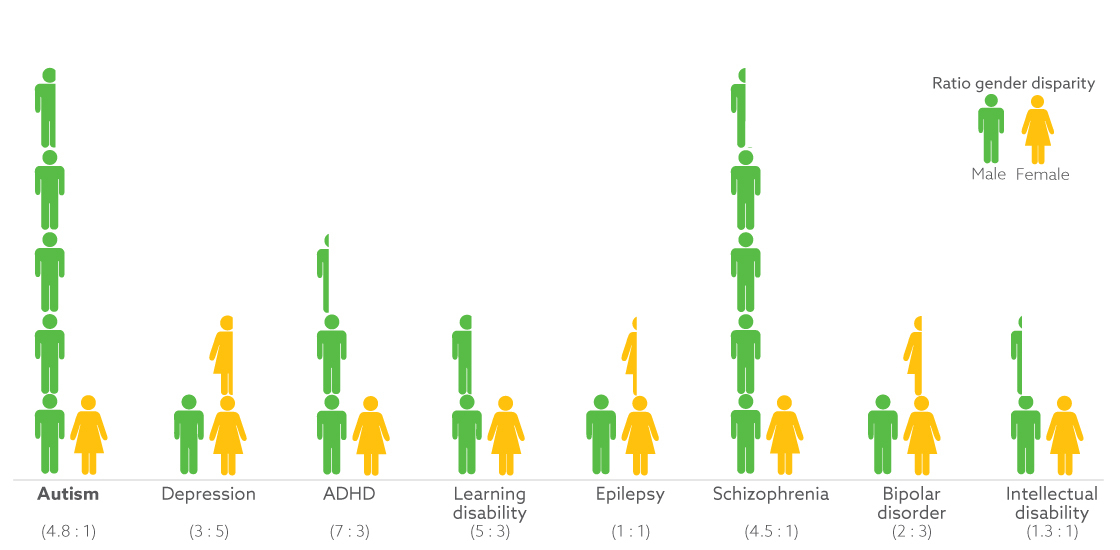THIS ARTICLE IS MORE THAN FIVE YEARS OLD
This article is more than five years old. Autism research — and science in general — is constantly evolving, so older articles may contain information or theories that have been reevaluated since their original publication date.
One of the most striking features about autism is that it affects roughly five boys for every girl, according to the latest data from the Autism and Developmental Disabilities Monitoring Network at the U.S. Centers for Disease Control and Prevention (CDC). What’s less well known is that this type of gender skew is not unique to autism.
Many psychiatric disorders, such as schizophrenia and attention deficit hyperactivity disorder (ADHD), are also more common in men than in women, whereas women are more likely to have depression or bipolar disorder.
We dug into population data to explore these trends. In the illustration above, the gender ratios for each disorder are scaled to 1, for easy comparison across them. Data for ADHD and learning disability are for children between the ages of 3 and 12, from the Summary Health Statistics for U.S. Children: National Health Interview Survey, 2012, a census aimed at monitoring the health of the nation.
Data for depression are for children 13 and older between 2007 and 2010. They come from the U.S. National Health and Nutrition Examination Survey, a combination of surveys and physical exams assessing the health and nutritional status of adults and children in the U.S. The numbers for bipolar disorder and schizophrenia are from the CDC’s Burden of Mental Illness report.
The CDC does not break down epilepsy or intellectual disability by gender, perhaps because little disparity exists among people with those conditions. Our numbers for epilepsy are based on the 2010 National Health Interview Survey, and for intellectual disability they’re based on National Health Interview Survey data collected between 1997 and 2008.

By joining the discussion, you agree to our privacy policy.